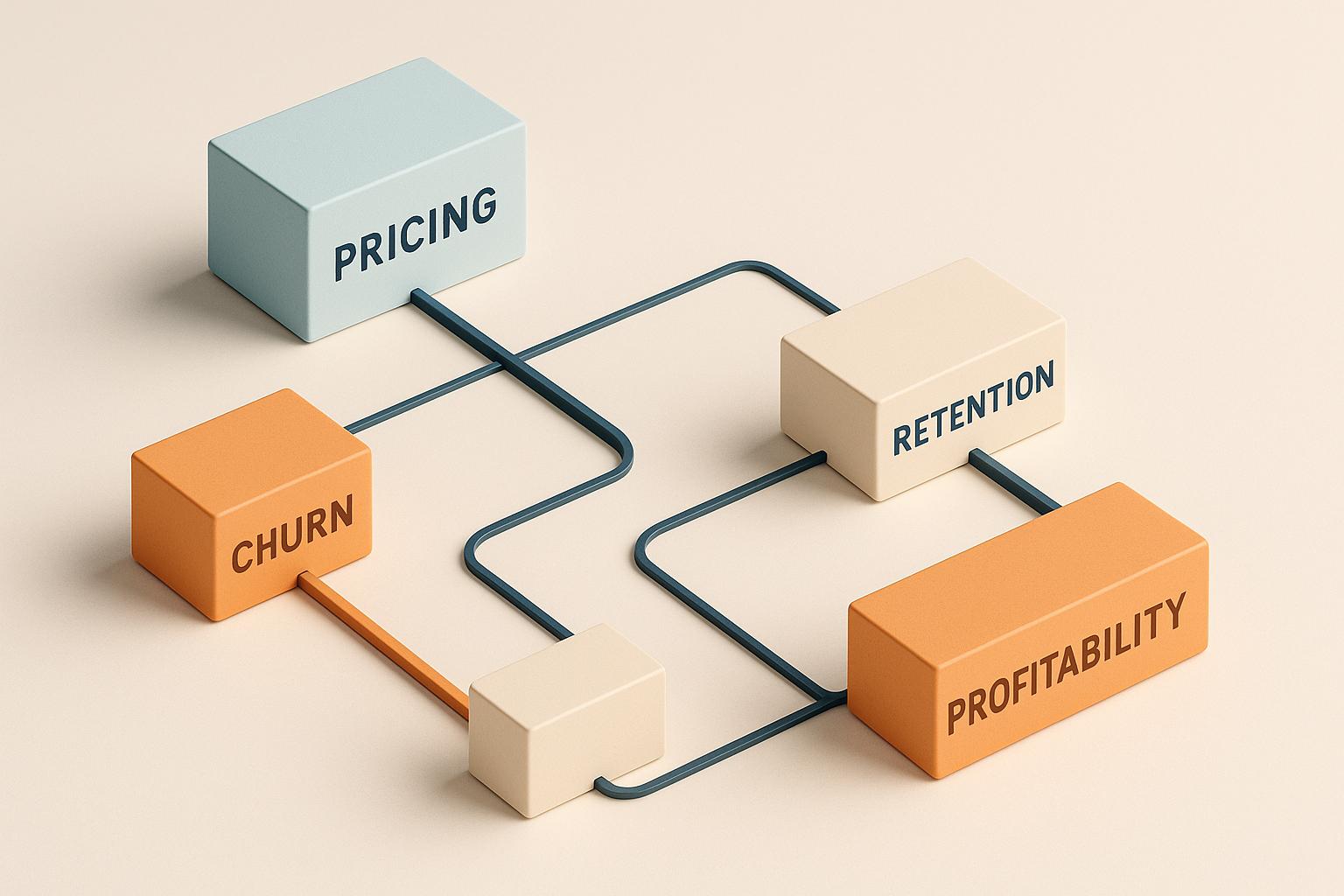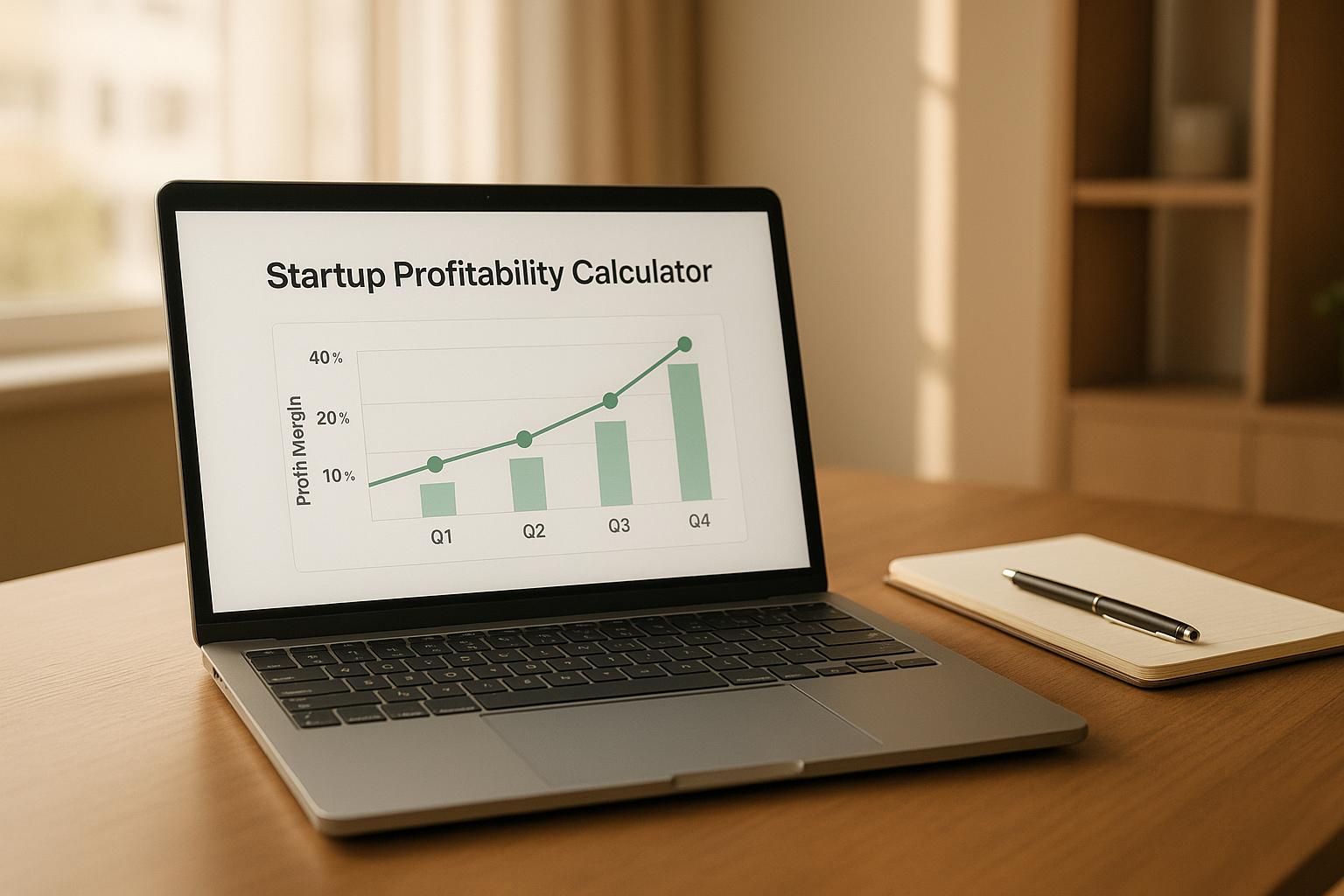Predictive Risk Analytics in Finance: Key Use Cases

Predictive risk analytics is revolutionizing how financial institutions manage risks. By using AI tools like machine learning and real-time data, it helps assess creditworthiness, detect fraud, and manage operational risks more effectively. Key benefits include faster processing, dynamic monitoring, and improved accuracy.
Highlights:
- Credit Risk: Combines traditional and alternative data for real-time, dynamic loan assessments.
- Fraud Detection: Real-time systems reduce false positives and adapt to new threats automatically.
- Operational Risk: Proactive tools analyze market, customer, and system data for better decision-making.
Quick Comparison
| Application Area | Traditional Methods | Predictive Analytics Methods |
|---|---|---|
| Credit Risk | Static credit scores, slow process | Real-time, dynamic, AI-driven |
| Fraud Detection | Manual rules, high false positives | Automated, adaptive, real-time |
| Operational Risk | Historical data, manual oversight | Real-time, data-driven insights |
Predictive analytics is reshaping risk management with AI-driven tools, but challenges like data quality, model bias, and integration remain. Financial institutions can benefit by adopting these technologies with expert support for smoother implementation.
1. Credit Risk Assessment
Predictive analytics has transformed how financial institutions evaluate borrower reliability and assess the likelihood of loan defaults. Instead of relying solely on static credit scores, institutions now use real-time systems that evolve with new data patterns.
Today, lenders employ advanced machine learning techniques to analyze a wide range of data. This shift allows for more detailed risk profiles and sharper lending decisions. The use of predictive analytics enables institutions to process large volumes of data instantly, spotting risks early and addressing them before they escalate.
Here’s a quick comparison of traditional methods versus predictive analytics in credit risk assessment:
| Aspect | Traditional Approach | Predictive Analytics Approach |
|---|---|---|
| Data Sources | Credit reports, income statements | Combines traditional and alternative data sources |
| Analysis Speed | Days to weeks | Instant, real-time analysis |
| Risk Evaluation | Static, one-time review | Ongoing, dynamic monitoring |
| Adaptability | Fixed rules-based systems | Self-learning algorithms that adjust to new patterns |
| Accuracy | Limited by past data | Improved through deeper, broader data analysis |
While predictive analytics offers clear advantages, its implementation isn’t without hurdles. Financial institutions must prioritize high-quality data and ensure models stay up-to-date. Striking a balance between advanced modeling and fairness in lending decisions is also essential.
Machine learning plays a key role here, identifying patterns that indicate potential defaults and refining its predictions as new data becomes available. This ability to adjust ensures these systems stay relevant in a fast-changing financial world, where older static models often fall behind.
For institutions looking to adopt these advanced tools, organizations like Phoenix Strategy Group bring expertise in areas like data engineering and regulatory compliance. This shift in credit risk assessment highlights how predictive analytics is reshaping financial decision-making, helping lenders manage risks with greater precision.
Next, we’ll explore how predictive analytics is being used to combat fraud, another critical area in financial services.
2. Fraud Detection Systems
Financial institutions are moving away from old-fashioned rule-based fraud detection methods and turning to predictive analytics for real-time protection against evolving threats. These systems use machine learning to sift through massive amounts of transactional data, spotting fraud more effectively.
This shift highlights a broader move toward dynamic risk management. Unlike static rule-based systems, modern solutions can detect complex fraud patterns as they arise and drastically cut down on false positives - a common issue with traditional methods.
Here's a quick comparison of how traditional systems stack up against predictive analytics:
| Capability | Traditional Systems | Predictive Analytics Systems |
|---|---|---|
| Detection Speed | Delayed response | Real-time monitoring |
| Pattern Recognition | Fixed rules only | Dynamic pattern learning |
| False Positive Rate | High (15-30%) | Lower (5-10%) |
| Adaptation to New Threats | Manual rule adjustments | Automatic pattern recognition |
| Data Processing Capacity | Limited | Handles millions of transactions |
Predictive analytics has transformed fraud detection by analyzing transaction data, user behavior, and device information all at once. These systems create detailed profiles of normal transaction patterns, flagging anything unusual that might indicate fraud.
For example, when a credit card transaction is processed, the system evaluates factors like:
- Spending history, location, time, and the risk associated with the merchant
- Device and network data
By identifying subtle patterns that suggest fraud, these systems can block suspicious transactions within milliseconds, stopping fraud before it happens.
Combining predictive analytics with existing security measures creates a strong, flexible defense against financial crime. However, for these systems to stay effective, institutions need to prioritize high-quality data and maintain models regularly. Frequent updates ensure the system stays ahead of new fraud tactics. Beyond reducing fraud losses, these systems also boost operational efficiency.
While fraud detection systems have set a high standard for predictive analytics, the next step is to expand these strategies into broader risk management practices.
sbb-itb-e766981
3. Risk Management Systems
Predictive analytics is reshaping risk management practices, building on the progress made in fraud detection systems. Financial institutions are moving away from older, static methods and embracing data-driven solutions that turn massive datasets into actionable insights. This shift helps organizations take a more proactive approach to managing risks.
Risk management systems today go beyond traditional methods that relied on historical data and manual oversight. They now focus on real-time assessments, which are critical for making informed financial decisions. Operational risk management, in particular, has seen a major transformation, with tools that allow for quicker and more accurate evaluations.
One example is MetricStream's Operational Risk Management system, implemented at a global bank. This system improved the efficiency of risk assessments while also cutting operational costs - a win-win for the institution.
These systems analyze a wide range of data types, including:
| Data Category | Risk Indicators | Monitoring Focus |
|---|---|---|
| Transactional | Payment patterns, anomalies | Operational irregularities |
| Market Data | Price changes, volatility | Market risk exposure |
| Customer Information | Behavior patterns, credit use | Credit risk signals |
| System Performance | Delays, failures | Technical vulnerabilities |
To make these systems effective, organizations need to connect key data points and translate them into actionable insights. However, implementing predictive analytics in risk management isn't without its challenges:
- Integrating new tools with existing systems can be complex.
- Machine learning expertise is often required.
- Meeting regulatory compliance adds another layer of difficulty.
- Scalability becomes an issue as operations grow.
For businesses aiming to improve their risk management capabilities, working with specialized advisors can be a smart move. Take Phoenix Strategy Group, for example - they offer services in data engineering and financial consulting to help companies use advanced technology for better risk management and smoother operations.
These advancements highlight how predictive analytics is changing the way financial institutions approach risk, paving the way for more efficient and effective operations.
Strengths and Limitations
Predictive risk analytics has transformed how financial risks are managed, delivering real-time insights and improving accuracy in areas like credit, fraud, and operational risks. However, implementing these systems comes with challenges, including the need for high-quality data, technical know-how, and substantial investment.
| Application Area | Key Strengths | Notable Limitations |
|---|---|---|
| Credit Risk Assessment | - Combines data from multiple sources - Automates decision-making - Speeds up processing |
- Relies on high-quality data - Prone to model bias - Requires navigating complex regulations |
| Fraud Detection | - Detects threats instantly - Learns patterns over time - Reduces false positives |
- Expensive to implement - Needs constant updates - Requires advanced technical skills |
| Operational Risk | - Identifies risks early - Improves compliance - Boosts efficiency |
- Difficult to integrate with older systems - Faces scalability issues - Involves high maintenance costs |
Beyond individual applications, predictive analytics is reshaping risk management as a whole. To succeed, organizations need to focus on solid data validation, frequent model updates, smooth system integration, and meeting regulatory standards.
While predictive analytics can address diverse risks - credit, fraud, and operational - companies must weigh its benefits against the costs of implementation. Some key factors to consider include:
- Ensuring data quality and validation
- Keeping models updated and well-maintained
- Meeting regulatory requirements
- Building the right infrastructure and expertise
For financial institutions, working with specialized advisors can help tackle these challenges, improving system performance and ensuring compliance.
Conclusion
Predictive risk analytics is reshaping financial risk management, transforming how institutions handle credit evaluation, fraud detection, and operational risks. With tools like AI and machine learning, financial organizations are shifting from reactive strategies to proactive approaches. These technologies are constantly evolving, offering new ways to tackle emerging challenges in the financial landscape.
The financial sector's complexity demands tools that can process massive amounts of data in real-time. Take CRIF's application and behavioral scorecards, for example - they're changing how lenders assess credit risk, helping them better predict customer behavior.
Looking ahead, predictive risk analytics is set to grow even more. Financial institutions are prioritizing:
- Refining real-time data processing and AI-driven models to handle complex risks
- Developing smarter fraud detection systems
- Enhancing tools for operational risk evaluation
While obstacles like data quality and maintaining models remain, the advantages of predictive analytics far outweigh these challenges. As financial markets evolve, predictive analytics will play an even more essential role in risk management.
For companies aiming to adopt these technologies, working with specialized advisors can simplify implementation and maximize results. Phoenix Strategy Group, for instance, supports growth-stage businesses in integrating advanced analytics into their risk frameworks while ensuring compliance with regulations.
The future of financial risk management will depend on using predictive analytics to create systems that are both resilient and forward-thinking.




